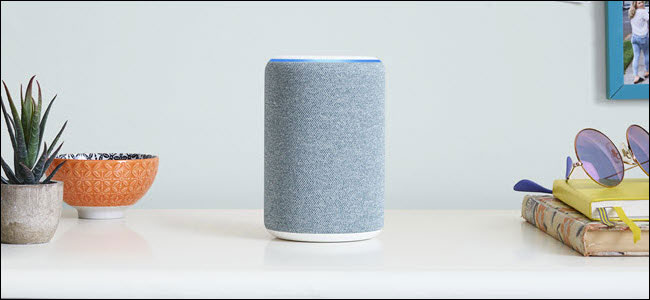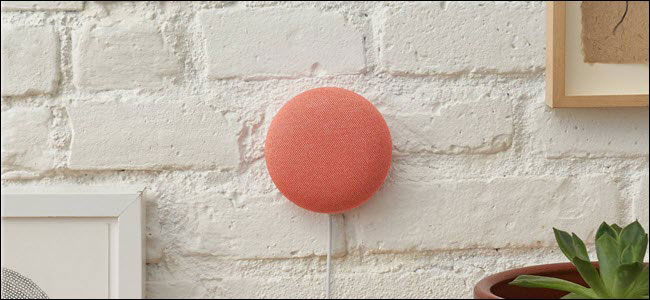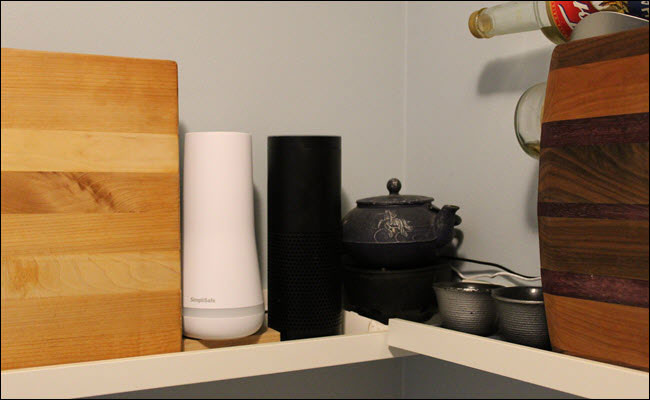Where is the best place in the room for a smart speaker?
Google Home and Amazon Echo devices have great microphones. If your device seems to be having difficulty capturing a voice, the problem may not lie with your speaker or your voice, but rather where the device is located. A better location can improve the performance of smart speakers.
Where is the best smart speaker?
- Why can speaker placement cause problems?
- The center of a room is the best location
- Wall mount bracket is the second best option
- Where should not put smart speakers
Why can speaker placement cause problems?
Smart speakers, like Google Home and Amazon Echo, are really 'dumb' devices on a local level. They are ultimately just a speaker with a few microphones and the ability to hear the device's 'wake up' command. The rest that makes up the intelligence of these speakers comes from the cloud.
But, even on a cloud platform, that intelligence doesn't do much if the speaker can't hear your voice.
Smart speakers have multiple microphones built to listen to everything around them. But, if you put the speakers in the wrong place, those microphones may not work optimally. But don't worry, fixing this is easy. Just move your smart speaker to another location. But the problem is moving it to where.
The center of a room is the best location
 Where is the best place in the room for a smart speaker? Picture 1
Where is the best place in the room for a smart speaker? Picture 1
To know where to put your smart speakers, start with learning about its microphones. Amazon Echo and Google Home have many microphones (Amazon Echo has 7 and Google Home has 2), arranged on a circular circuit board. The internal speakers are also in the same round shape.
That means if you put the smart speaker close to the wall, you risk blocking some of its microphones and they won't hear your voice. Worse yet, it could hear the sound of voices slamming into the wall and echoing into the microphone. Similarly, any sound that the smart speaker emits is going in all directions, which means that it will hit nearby walls and pop out, causing songs to sound chaotic.
Due to that arrangement of microphones and speakers, the best location for smart speakers is as close to the center of the room as possible, ideally ideally with few obstacles. Achieving that can be a bit tricky if you put Echo or Google Home on the coffee table and the power cord can stumble someone.
You might consider attaching the Echo Dot or Nest Hub Mini (formerly Google Home Mini) to the ceiling. You can find pylons for both of these devices and run the power cord to the nearest outlet.
With a ceiling mount, you can not only choose a good location in the room, but also limit obstacles, such as furniture, that hinder the operation of the speaker. Depending on the ceiling mount you use, it may also help make the speaker more discreet.
If you can't place the speaker in the middle of the room, try to get it as close to that position as possible. You should also consider where people will gather. In the living room, you might want to place Amazon Echo or Google Home on a stand next to the couch where people sit.
Wall mount bracket is the second best option
 Where is the best place in the room for a smart speaker? Picture 2
Where is the best place in the room for a smart speaker? Picture 2
Placing a smart speaker in the center of a room or ceiling is not always possible. You may need to consider alternatives. Placing speakers on racks or other furniture near people's locations is a good option, but you might also want to consider wall mounts to keep smart speakers out of the way.
You can use the same ceiling mount for Echo and Google Home as wall mounts. Just punch a hole in the wall, attach the smart speaker to the mounting bracket, then mount both to the wall. You get the aesthetic and the secondary benefit: This position rotates the entire mic and the speaker into open space instead of pointing some hardware towards the wall.
The other pylons work by plugging directly into the wall and creating a base to keep the smart speakers. It is best to direct the speaker out, because if you do the opposite, you can block the microphone and the speaker.
If you own the new Nest Mini, you don't even need the mounting bracket! It has a body-mounted hole so you can hang like a picture.
If you can't place the smart speaker in the middle of the room or attach it to the wall, you may have to place the Echo or Google Home in a less ideal location. The smart speaker will still work, but the audio output will be inaccurate and clear. But there are a few places you should avoid completely.
Where should not put smart speakers
 Where is the best place in the room for a smart speaker? Picture 3
Where is the best place in the room for a smart speaker? Picture 3
Sometimes, the ideal locations don't fit the design of your home, so you'll have to choose the best location possible. However, there are a few places you should avoid completely. For example, do not place smart speakers near or on speakers of stereo systems. These locations can be very attractive because they are convenient flat surfaces and are usually located near the plug, but cause problems.
You want to stand in the middle of a big concert and try to talk, right? You will have difficulty hearing all the words and have to respond loudly enough so others can hear you. Smart speakers will experience the same problem, so don't put it right on the other speakers.
Besides, keep away from windows. Placing smart speakers near windows will cause problems, even when you close them. Echo and Google Home devices are sensitive enough to hear a person's voice, even through the glass.
Depending on your security awareness, you may want to consider moving the smart speaker to a place where it cannot be seen through the window. As some security researchers have pointed out, it is possible to deceive the voice assistant on nearly every device (smart speakers, tablets and even phones) to accept orders by shining a laser beam. on them.
With the right signals, the microphone will treat light as sound and the voice assistant will understand the laser as the spoken command. Visibility is essential for the attack to occur, so keeping the smart speaker somewhere away from the window helps a lot.
If the best place to keep your smart speaker is near the wall and you cannot mount it vertically, try to keep it as far from the wall as possible. Amazon says you should position the speaker at least 8 inches (20cm) away from the wall. The extra space will help the microphone hear clearly and the speakers sound better. Of course, make sure it is not in a far corner of the room. Smart speakers will be harder to hear your voice if it is too far away.
You should read it
- Warning: Hackers can access smart speakers
- Which smart speaker is perfect for you?
- Alibaba spent $ 1.4 billion as an ecosystem for smart speakers
- 6 ways seniors can use Google Home to make the COVID-19 quarantine easier
- How to set up Google Home, Mini and Max smart speakers
- Google Home: 5 strange but delightfully useful places to put your smart speaker
- Samsung will sell smart speakers with Bixby virtual assistant at the end of 2018
- Surprise: Baidu surpassed Google to become the world's No. 2 smart speaker manufacturer
- How to turn old Android phones into smart speakers
- Qualcomm introduces a smart sound platform with Cortana promising to explode
- Review Lenovo Yoga Smart Tab: Powerful speakers, integrated Google Assistant
- What is the hot SoundMax M-1 speaker that young people are crazy about?






 Great Apple HomePod tips you should know
Great Apple HomePod tips you should know Google Home: 5 strange but delightfully useful places to put your smart speaker
Google Home: 5 strange but delightfully useful places to put your smart speaker Surprise: Baidu surpassed Google to become the world's No. 2 smart speaker manufacturer
Surprise: Baidu surpassed Google to become the world's No. 2 smart speaker manufacturer Which smart speaker is perfect for you?
Which smart speaker is perfect for you? Should water basins be placed in air-conditioned rooms?
Should water basins be placed in air-conditioned rooms? Instructions for connecting speakers and audio systems at home
Instructions for connecting speakers and audio systems at home